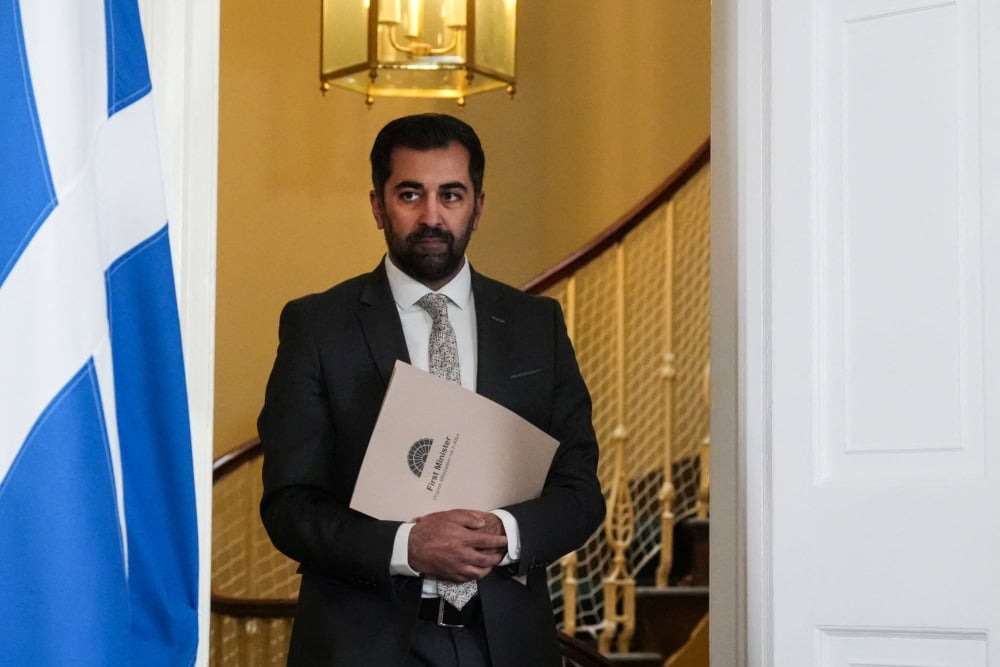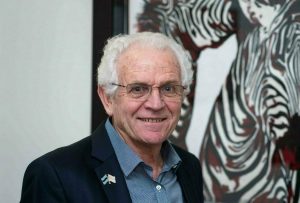Scottish Prime Minister Hamza Yousaf submitted his resignation at the beginning of last week after his former coalition partner, the Green Party, withdrew its support from the government.
Yousaf did the unforgivable: he announced about two weeks ago that Scotland could not meet its ambitious climate goal – to reduce its emissions by 75% by 2030. It was just an honest acknowledgment of reality, but for the green dreamers it was the biggest possible slander to question the sacred climate goals. The Greens in government have not forgiven him for this.
In addition, one must know that Scotland and especially Yousaf in the weeks-league to play at the very front: Scotland’s Scottish National Party (SNP) wrote the so-called progressive politics on their banners and was even ahead of the already very liberal Britain as a whole. Scotland has recently introduced several laws favoring sexual minorities, including a law that makes gender reassignment easier and paid for by the state, and a law that declares any criticism or even jokes about transsexuals to be hate speech, with draconian penalties .
Yousaf, the child of Pakistani migrants, naturally made a big fuss with the media about the fact that he comes as an immigrant and a Muslim from a disadvantaged group and made it his goal to reverse the traditional composition of Scotland’s population.
Also on the environmental front, Scotland wanted to be the model: if other countries wanted to be climate neutral by 2050, Scotland wanted to do it even earlier. Yousaf’s predecessor as prime minister, Nicola Sturgeon, was the first government in the world to declare a state of climate emergency (in a country where it is usually cold, rainy and cloudy), wanted to make her country climate-neutral as early as 2045 and by 2030 already have the outlet of carbon dioxide gas reduced by 75%.
Year after year, the goals could not be achieved and finally Yousaf had to admit that it is an illusion to achieve the reduction of 75% until 2030. However, for the Greens who supported his government, it was the worst and they criticized the prime minister in dismay.
Yousaf ended the coalition with the Greens last week, shortly before they could do so. In the Scottish Parliament with 129 seats, the SNP has 63, the Conservatives 31, the Labor Party 22, the Greens 7 and the Liberal Democrats 4. At least 65 seats are needed for a majority.
A motion of no confidence against Yousaf has been prepared by the opposition and without the Greens he would have too little support. To spare him the humiliation of being expelled from office, Yousaf pre-empted it by resigning.
The ruling SNP has been a left-wing nationalist party from the outset, but its primary objective is actually independence for Scotland. While in the beginning his leftism showed itself in the development of the welfare state, in recent years it has increasingly found its destination in the so-called identity politics with a focus on all kinds of minorities and an obsession with fighting discrimination.
Yousaf was head of government for barely a year after succeeding Nicola Sturgeon, who had to resign due to corruption complaints. He was previously Scottish Health Minister. He was also counted among the group of young, progressive leaders celebrated in the media but often disappointed in government.
A similar fate recently befell the prime minister of Ireland, Leo Varadkar, when voters in a referendum rejected a so-called anti-discrimination proposal and Varadkar resigned.








